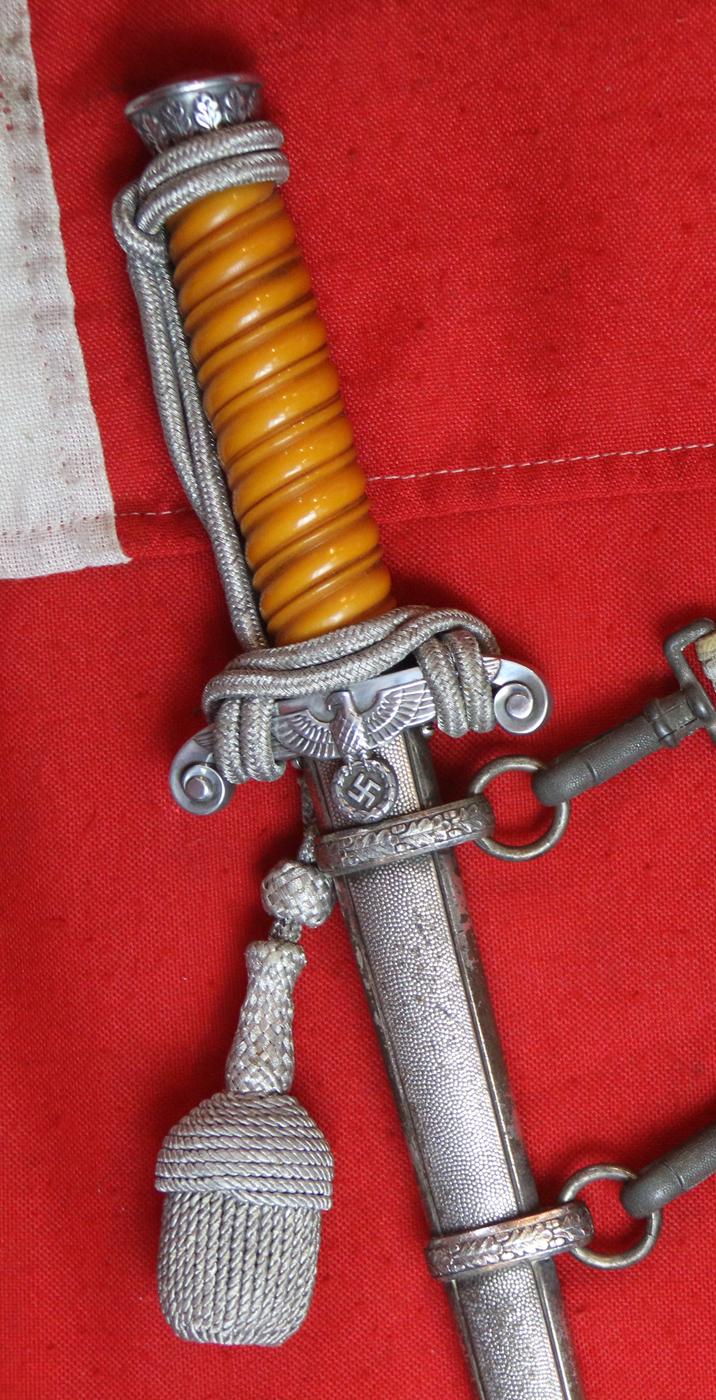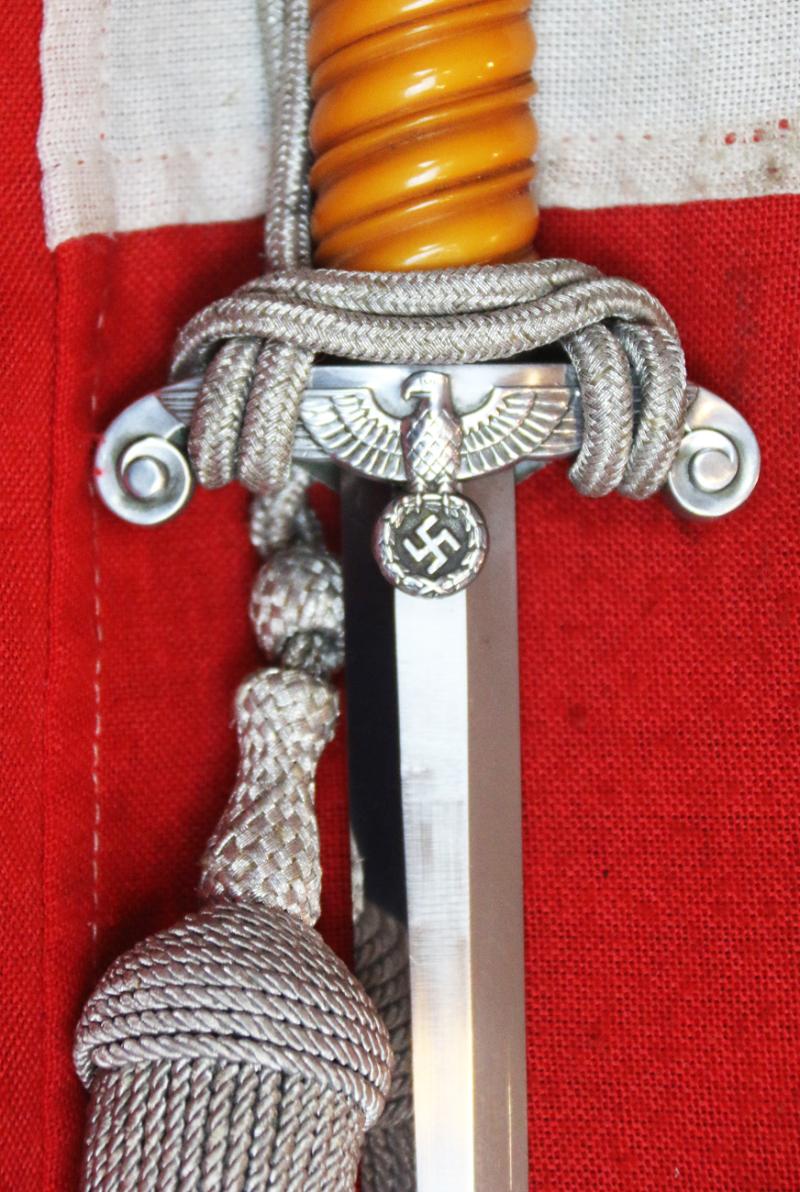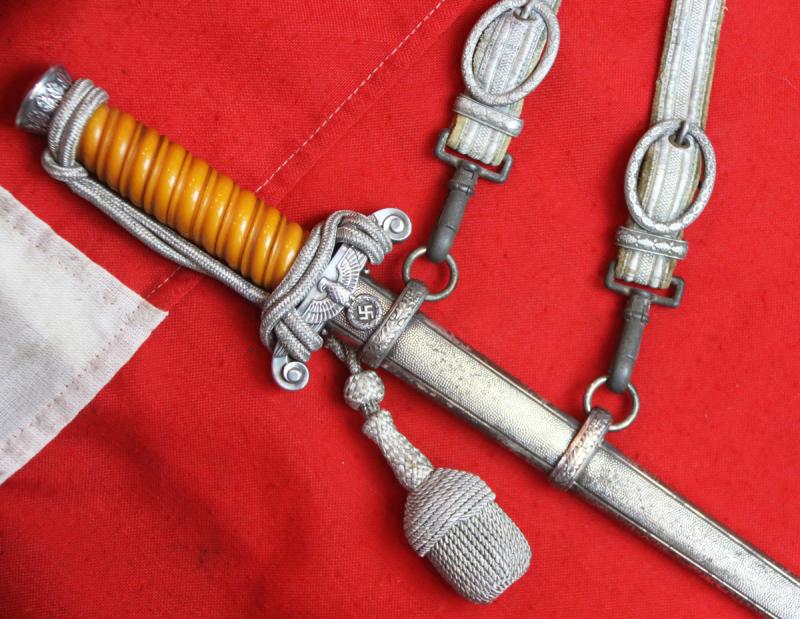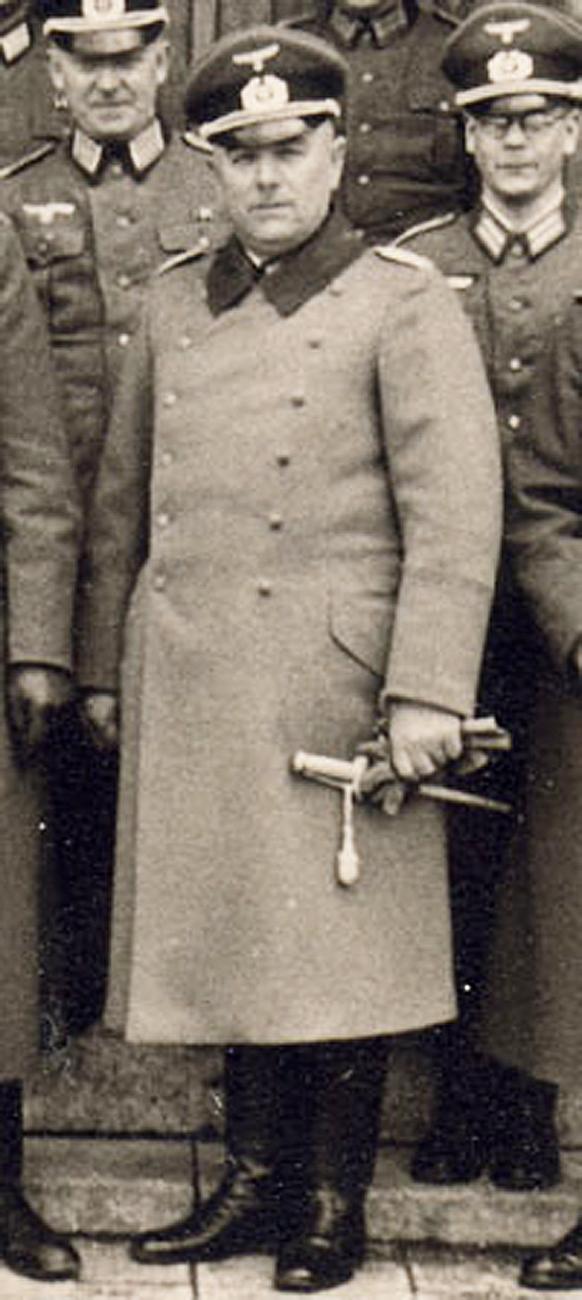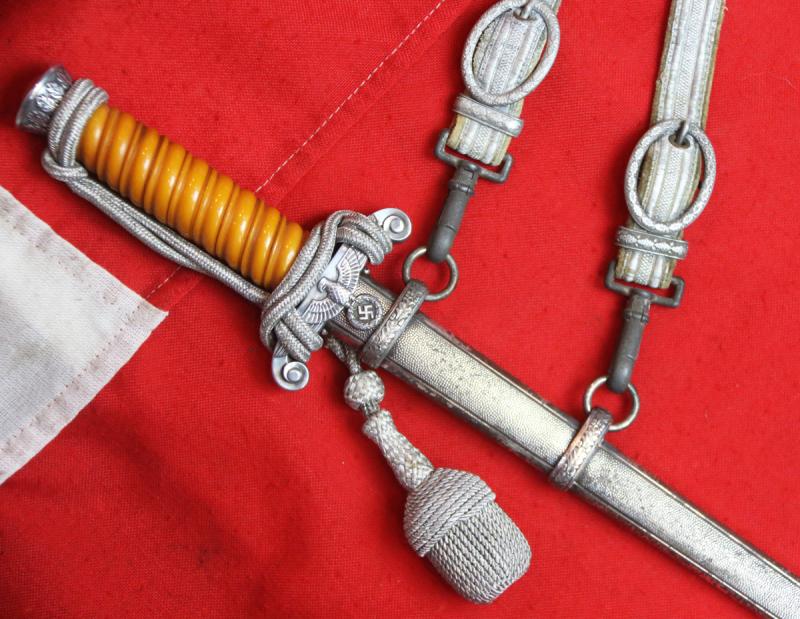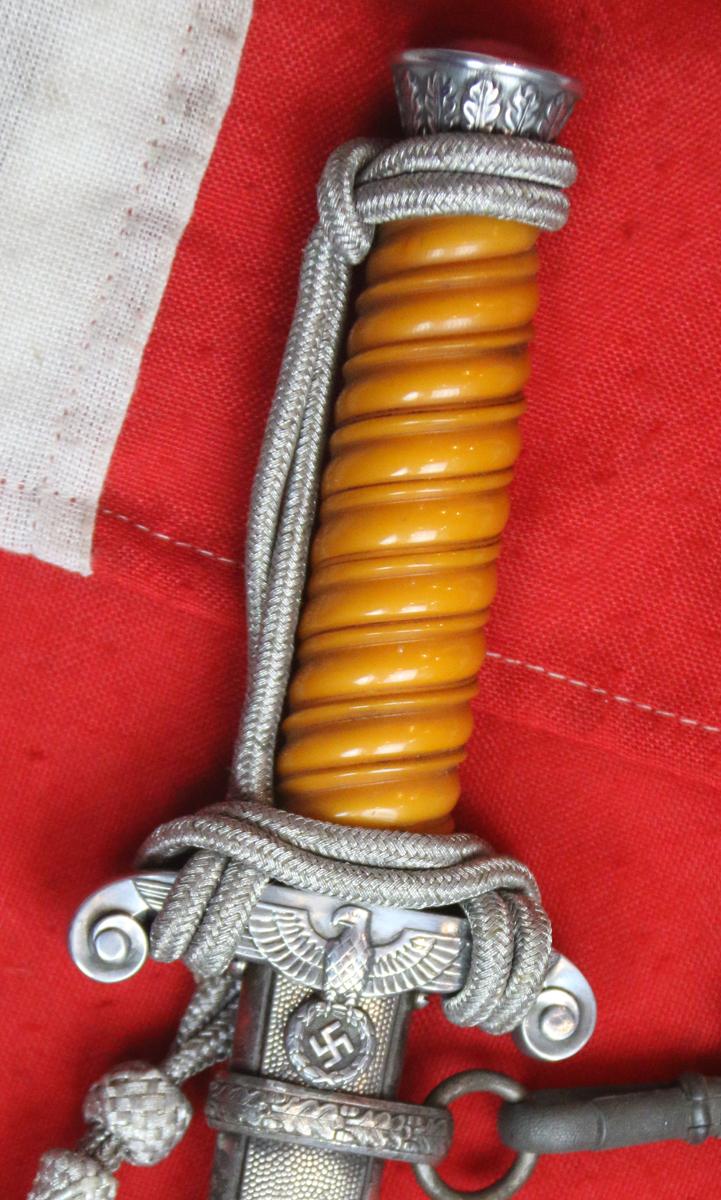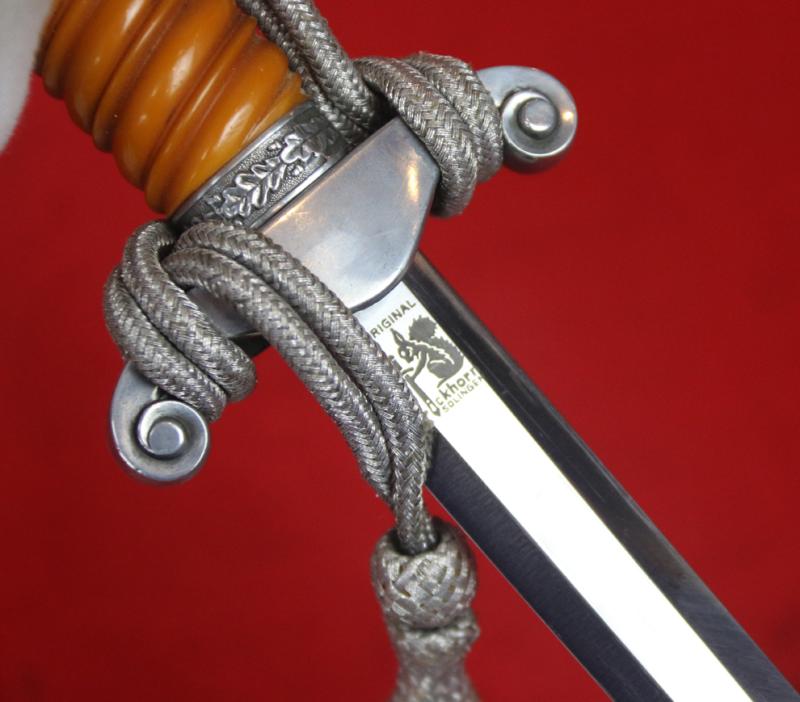An Excellent German WW2 Heer (Army) Officer's Dagger with Hangers and Portopee .
An exceptional early 1936 army officers dagger by renown maker Carl Eickhorn
This is a textbook example of this early type of officers dagger by maker Carl Eickhorn. With a 60-plus year old matching patina. The grip is a beautiful deluxe amber pumpkin colour with zero chipping or cracking. The cross guard is excellent+, as is the pommel. The edges are crisp while the surfaces remain smooth. The blade is well marked. It is bright throughout, still having nearly 100% of its manufacturer’s crossgraining. There is some very slight wear marks from removal and replacing of the blade from and back into the scabbard. The edges are crisp. The blade surface easily grades extremely fine or better. The early scabbard is the finely-detailed type with hand detailed beveled bands. The scabbard is perfectly straight with some slight aging marks along the edges, exhibits nice bright finish small edges of dark patina. With well marked hanger with matching tone. Additionally with an original tied knot, aluminium wire portopee, in fine condition. This piece is overall in extremely fine plus condition, not to be easily bettered A local acquisition and has remained untouched.
The army dagger was designed by Paul Casburg and was allowed as a side arm option in place of the Army sword in 1935.
The grip came in white, yellow or orange and had a carved groove format, running clockwise, on the grip. One type is the Amber glass grip that is twice as heavy as real amber Early grips are found being a solid plastic material, by 1939 the grips changed to being plaster filled and wood base with a plastic coating.
The very early cross guard and pommel were made from brass with a thick 4 microns of silver plating. Later issued fittings range from nickel based to an alloy plated with 1-2 microns of silver, as well as nickel plating. The last daggers made had a dull gray oxide finish. It should be noted that early daggers were finished with a dark burnishing in the reassess of the fittings, that was to make the dagger look like an antique.
Cast onto the cross guard was an eagle with wings wide open holding an oak leaf wreath in its talons. At the centre of the wreath was a swastika. The pommel had a ring of oak leaves rising vertically from the grip to the pommel top, with the pommel screwed onto the blade tang to secure the grip, cross guard and blade. On early daggers there was a clear lacquer applied over the fittings.
The blade had no motto or engraving as standard. Many blades were cross-grained polished, but it is usually lost over the decades. Etching as well etched presentations, or applied presentation Damascus or just plain damast blades were available at extra cost. Its rare to find real damast blades with a trademark on them as this cost the buyer extra to have this applied.
Early Army dagger’s had a brass based scabbard, that after 1936 went to a steel based scabbard that was covered in a simple "pebble dash" finish. Again the very early brass based had 4 microns of silver plating where as the later were reduced to 1-2 microns of silver finish as well as the nickel finish and late issues with the gray oxide finish. Pressure fitted to the scabbard were two hanger suspension rings with oak leaf patterns onto which the hanger was clipped. The early daggers had a clear lacquer applied over the finish.
Two hanger straps, Silver coloured face with field grey velvet backs were used. The fittings range from base material of silver-plated brass to a natural aluminium finish. The fittings are as follows; oval buckles with oak leaf patterns with matching slides and clips and an upper open clip loop were used to suspend the dress dagger from the officer’s belt or in pocket hanger.
The army dagger ceased production in 1943
Code: 24399
885.00 GBP


